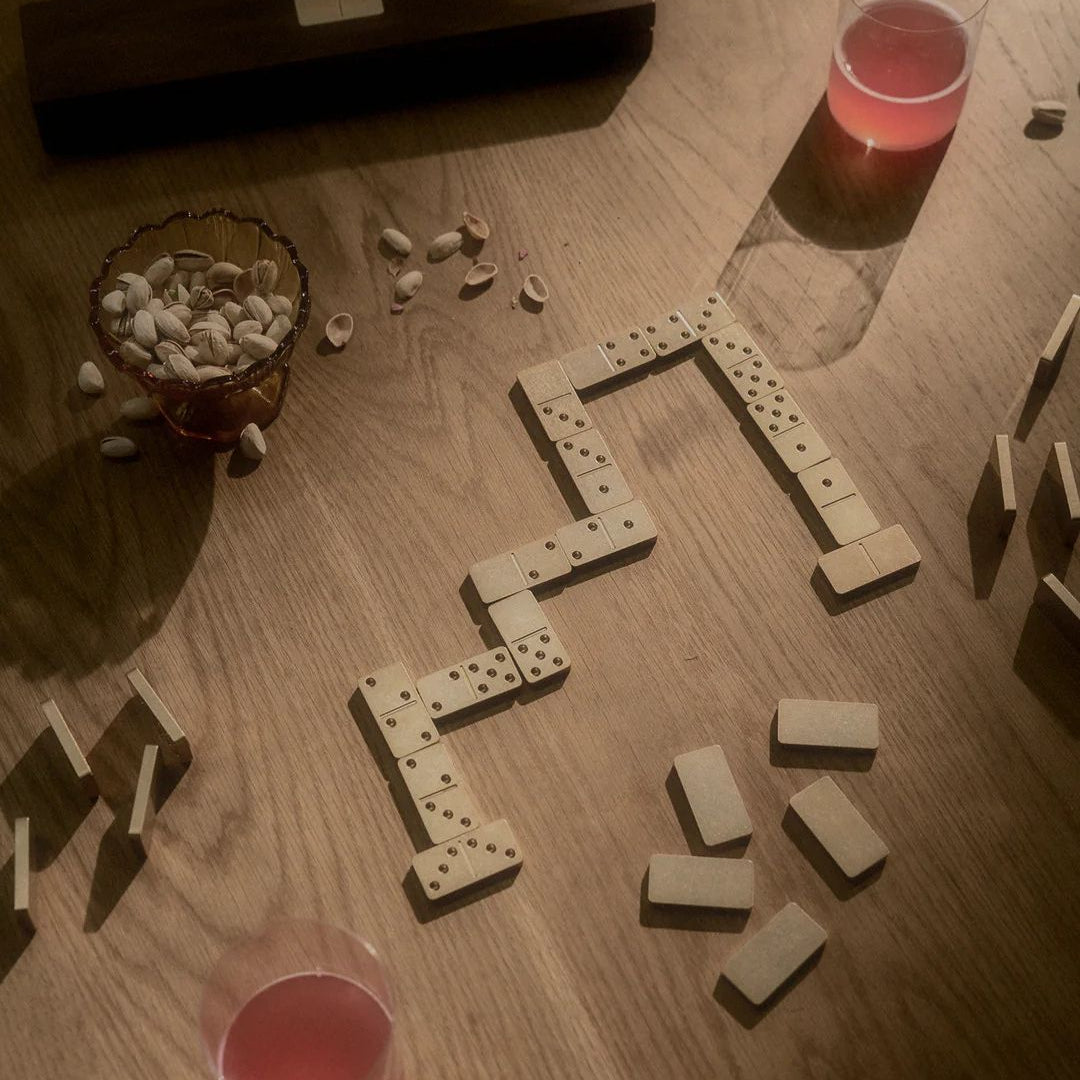I spend a lot of time styling living rooms, and I often notice the same design mistakes happening across different spaces. These small missteps can make a room feel out of balance, awkward to move through, or simply less inviting than it could be.
The good news? They’re easy to fix once you know what to look for. Here are 8 of the most common living room design mistakes and how to turn them around with a few thoughtful tweaks

1. ALWAYS PUSHING FURNITURE AGAINST WALLS
Depending on your layout and the size of your space, pushing furniture against the walls might actually work. But often, it can make the room feel disconnected and sparse, and it tends to kill conversation flow, especially when a sofa is on one wall and the armchair is awkwardly off to the side.
If your space allows, try floating your furniture. Pull your sofa or chairs at least 5-10cm off the wall and anchor them with a rug underneath, as it helps define the zone and creates the illusion of more space. To encourage conversation, arrange pieces to face each other where possible, such as a sofa opposite two armchairs with a coffee table in between.

2. CHOOSING THE WRONG SIZE SOFA
A common mistake I see is choosing a sofa that’s either far too big (it dominates the room), or far too small (and the space ends up feeling under-furnished). Either way, it throws off the entire layout and flow of the room.
The right-sized sofa should allow you to move freely around it, with 30-60cm of clearance on each side. Always measure your room before shopping and consider both width and depth and don’t forget the arms! Choose a style that feels proportional to your space and complements the rest of your layout.

3. POOR ART PLACEMENT
Hanging art too high can throw off the balance of your room and make the space feel disconnected. When artwork sits well above eye level, it loses impact and can feel less inviting.
Aim to hang your art at eye level, around 142-152cm from the floor to the centre of the piece. When placing art above furniture, leave a 10-20cm gap between the bottom of the frame and the top of the furniture to create a cohesive and polished look.

4. OVERLOADING WITH PLANTS
I love indoor greenery as much as the next person, but too many plants in one space can feel more like a jungle than a curated interior. Overcrowding corners or tabletops with foliage often adds unnecessary visual clutter.
Instead, be selective and intentional with plant placement. Choose one sculptural plant, branch or a single small bonsai on a coffee table, or place a larger plant in a corner. Keep it sparse and look for interesting shapes, so it acts as a focal point rather than clutter.

5. RUGS THAT ARE TOO SMALL
A rug that’s too small is one of the quickest ways to throw off the balance of a living room. It can visually shrink the space and make your furniture feel like it’s floating without a clear zone to anchor it.
Rugs should either be oversized enough to sit fully under all your main furniture pieces (ideal for formal spaces or disguising flooring), or large enough for at least the front legs of your sofa and chairs to rest near it. Both options create a sense of cohesion and help ground the room. Just avoid rugs that feel disconnected or undersized for the space - it’s all about proportion.

6. GOING FOR MATCHING FURNITURE SETS
It's tempting to buy a matching set – sofa, coffee table, entertainment unit – but it can leave your space feeling flat and predictable. Without a little variation, spaces risk looking one-dimensional and lacking personality.
Mixing different styles and materials bring warmth and character to a room. Vintage pieces, contrasting wood tones, or textured finishes add interest and depth without feeling chaotic. To keep it cohesive, look for subtle links - like the walnut timber legs of a dining chair that echo the tone of a sideboard - while still mixing things up.

7. CHOOSING THE WRONG LIGHTING
Lighting can make or break a room - too cool, and it feels sterile; too dim or yellow, and it can feel a bit dated. One ceiling light on its own (aka the dreaded big light) won't cut it to.
Start by layering your lighting with a combination of ambient (ceiling light), task (reading lamps) and accent (wall or table lamps) to set the mood. Then swap coool-white bulbs for a warm-white, ideally around 2700k for a soft, inviting glow that will instantly make your space feel more inviting.
8. RANDOMLY SELECTED CUSHIONS
When your cushions aren't working in harmony, the room can feel off without you quite knowing why. This is often due to a lack of a cohesive colour palette.
Try using the 60:30:10 rule as a guide - 60% of your space should be a dominant colour, 30% a complementary secondary colour, and 10% an accent colour. Your cushions, art, vases and other accessories are where your accent colour comes in, so choose them thoughtfully. I often look to the colour in an artwork or rugs, then choose a few cushions in a tonal palette which echo this colour. This one shift can instantly make your space feel more pulled together.
FINAL THOUGHTS
Designing a living room that feels cohesive, balanced and welcoming doesn't mean starting from scratch. Often, it's a matter of tweaking the layout, refining your styling pieces, or re-thinking the way you're using colour or light.
Want more tips for styling your home? Sign up to my fortnightly style & design newsletter or follow me on Instagram.
Image credits:
Kerrie-Ann Jones, OME Dezin, Shade Degges, CLO Studios, Alicia Taylor, Studio Albus, Ryan Linnegar, Love House NY, Max B Photos, The LP Creative, Parker Studio, Jacqui Turk, Jacket Curated and Dave Wheeler.






